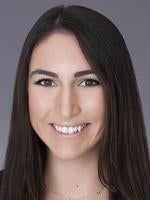The U.S. Copyright Office’s January 2025 report on AI and copyrightability reaffirms the longstanding principle that copyright protection is reserved for works of human authorship. Outputs created entirely by generative artificial intelligence (AI), with no human creative input, are not eligible for copyright protection. The Office offers a framework for assessing human authorship for works involving AI, outlining three scenarios: (1) using AI as an assistive tool rather than a replacement for human creativity, (2) incorporating human-created elements into AI-generated output, and (3) creatively arranging or modifying AI-generated elements.
A key takeaway from the report is that text prompts alone – even detailed ones – cannot currently provide sufficient human control over their execution to attribute authorship rights in the resulting output to the user. While highly detailed, iterative prompts may describe the user’s desired expressive elements, the same prompt can generate widely different results each time, demonstrating a lack of meaningful human control over the AI’s internal “black box” processes, at least as the technology stands now. The Office acknowledged that this conclusion could change if future AI tools offer users a higher degree of direct control over the expressive aspects of the final output.
To illustrate its stance, the Office points to Jackson Pollock’s paintings as examples of copyrightable works even where the output of the creative process appears random or unpredictable. While the final arrangement of paint in a Pollock piece may not have been fully predictable, Pollock himself chose the colors, number of layers, texture, and used his own body movements to physically execute these choices. By contrast, AI-generated works often involve an algorithmic process largely outside the user’s direct control. Pollock’s work, the Office notes, came from tangible and deliberate human decisions—rather than from a system where the user simply prompts and then observes. The key issue is the degree of human control over the creative process, rather than the predictability of the result.
The Office distinguishes between simple text prompts and other forms of creative input provided by a user to an AI system (such as a photograph or drawing). If the user’s creative input is perceptible in the AI-generated output, or the user makes creative modifications to AI-generated material, those portions of the work may be eligible for copyright protection. Similarly, where AI is used to augment or enhance human-created works (like films using AI visual effects), the overall work may remain copyrightable as a whole, even if the AI-generated components would not be individually protectable.
Many AI platforms now allow users to select, edit, and re-arrange individual elements of AI-generated content, offering a greater level of human engagement than text prompts alone. The Office reiterates that a case-by-case analysis of the creation process is necessary to determine whether the human contributions are sufficient for copyright protection, leaving it to the courts to provide further guidance on the extent of human authorship required in specific contexts.
The Office believes the existing legal frameworks are flexible enough to address emerging AI-related copyright issues, and that enacting new regulations would not provide the desired clarity given the inherently fact-specific nature of the analysis and AI’s wide and evolving role in creative processes. The Office also raises policy concerns that extending blanket copyright protection to AI-generated works could flood the market with AI-generated content, potentially devaluing or disincentivizing human-created works.
In light of this guidance, it is essential for creators and businesses to document their creative process, including human-created elements, modifications, and arrangements of AI-generated outputs, and how the AI tool is being used—whether as an assistive technology or as the principal decision-maker in shaping the creative elements of the final output. This documentation may be required or helpful during the copyright application process and in potential ownership or infringement disputes.
While AI continues to transform creative industries, the Office’s guidance is a reminder of the fundamental role of human creativity in works seeking U.S. copyright protection. Notably, the Office’s position largely aligns with emerging international consensus—jurisdictions including Korea, Japan, and EU member states have similarly reaffirmed that meaningful human creative contribution is a prerequisite for copyright protection. Looking ahead, Part 3 of the report will address the training of AI models on copyrighted works, licensing considerations, fair use, and allocation of liability. These topics are among the most complex and closely watched issues at the intersection of AI and copyright.



 />i
/>i

